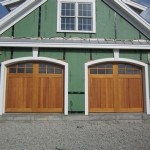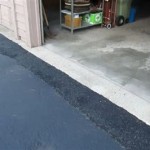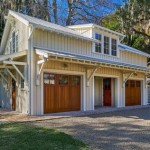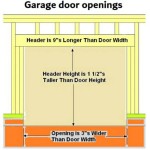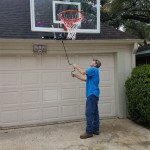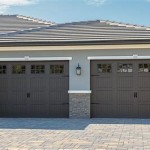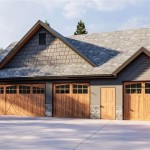Stay Warm This Winter With A Comfort Zone Garage Heater: Wiring Considerations
As winter's chill descends, the garage often becomes a neglected space, left to the mercy of freezing temperatures. This can render it unusable for hobbies, repairs, or even simple storage if temperature-sensitive items are kept there. Investing in a Comfort Zone garage heater offers a solution, turning the garage into a comfortable and functional area throughout the colder months. However, selecting the right heater and, crucially, ensuring proper wiring are paramount for safety and optimal performance. This article addresses key aspects of Comfort Zone garage heaters, focusing specifically on the wiring considerations essential for safe and effective operation.
Garage heaters, unlike portable space heaters intended for small rooms, often require dedicated electrical circuits due to their higher power demands. A Comfort Zone garage heater typically produces a significant amount of heat, translating to a substantial electrical load. Overloading an existing circuit can lead to tripped breakers, blown fuses, and, in more severe cases, electrical fires. Therefore, understanding the heater’s wattage or amperage requirements and the capacity of the garage's electrical system is the first step in ensuring safe installation.
Comfort Zone offers a variety of garage heaters, ranging from models that plug into standard 120V outlets to those requiring 240V connections. The choice depends primarily on the size of the garage and the desired heating output. Smaller, less powerful heaters might operate safely on a 120V circuit, but larger units almost always necessitate a 240V circuit. Ignoring this distinction can have severe consequences, potentially damaging the heater and creating a significant fire hazard. Before purchasing a Comfort Zone garage heater, carefully review its specifications to determine its power requirements and the appropriate voltage for wiring.
Understanding Your Garage's Electrical System
Before even considering the Comfort Zone garage heater wiring, it is crucial to assess the existing electrical system in the garage. This involves identifying the circuit breaker panel that supplies power to the garage, determining the amperage rating of the dedicated circuits within the garage, and evaluating the overall capacity of the electrical system. This assessment is best performed by a qualified electrician who can accurately measure the existing electrical load and advise on the suitability of adding a new circuit for the heater. If the existing electrical panel is near capacity, upgrading the panel might be necessary to accommodate the additional load.
The amperage rating of a circuit breaker indicates the maximum amount of electrical current that the circuit can safely handle. A 15-amp circuit, common in residential garages, can typically handle a heater with a wattage of around 1800 watts. However, it is crucial to account for other devices that might be connected to the same circuit. Overloading a circuit, even momentarily, can trip the breaker, interrupting power to the heater and potentially other devices. It's essential to consult with a qualified electrician to determine the appropriate circuit breaker size for the specific Comfort Zone garage heater model selected.
For larger Comfort Zone garage heaters requiring 240V power, a dedicated circuit is essential. This involves running a new cable from the main electrical panel to a dedicated outlet in the garage. The size of the wire used for this circuit depends on the amperage rating of the breaker and the distance from the panel to the outlet. Using undersized wiring is extremely dangerous and can lead to overheating and fire. The National Electrical Code (NEC) provides detailed guidelines on wire sizing based on amperage and distance. It is imperative to adhere to these guidelines to ensure safe and reliable operation.
Furthermore, the type of wiring is a crucial consideration. For garage installations, using the appropriate type of cable, such as NM-B (nonmetallic-sheathed cable) or conduit-protected wiring, is vital. The choice depends on local building codes and the specific installation conditions. NM-B cable is suitable for dry locations, while conduit provides additional protection against physical damage and moisture. Consulting with a qualified electrician ensures that the wiring meets all relevant safety standards and local requirements.
Safe Wiring Practices for Comfort Zone Garage Heaters
Once the electrical system has been assessed and the appropriate circuit has been identified or installed, following safe wiring practices during the Comfort Zone garage heater installation is paramount. This includes using the correct tools, following the manufacturer's instructions meticulously, and taking precautions to prevent electrical shock. Always disconnect the power to the circuit breaker before working on any electrical wiring. This simple step can significantly reduce the risk of electrical shock.
When connecting the Comfort Zone garage heater to the electrical circuit, ensure that all connections are secure and properly insulated. Loose connections can cause arcing, overheating, and potentially fire. Use wire connectors specifically designed for the wire gauge being used and ensure that the connectors are properly tightened. Wrap the connections with electrical tape to provide an additional layer of insulation and prevent accidental contact.
For 240V heaters, the wiring typically involves connecting three wires: two hot wires and a ground wire. The hot wires provide the electrical power, while the ground wire provides a safety path for electrical current in case of a fault. Incorrectly wiring the ground wire can create a significant safety hazard. Ensure that the ground wire is securely connected to the grounding terminal in the outlet box and to the grounding lug on the heater.
If the Comfort Zone garage heater is hardwired directly to the electrical circuit, rather than plugged into an outlet, use a suitable junction box to make the connections. The junction box provides a safe and protected enclosure for the wiring connections. Follow the manufacturer's instructions for wiring the heater to the junction box, ensuring that all connections are secure and properly insulated.
After completing the wiring, carefully inspect all connections to ensure that they are secure and properly insulated. Use a multimeter to verify that the voltage is correct and that there are no shorts or ground faults. Only after confirming that everything is properly wired, restore power to the circuit breaker and test the heater.
The Importance of Professional Installation
While some homeowners may be tempted to save money by performing the Comfort Zone garage heater wiring themselves, it is strongly recommended to engage a qualified electrician for the installation. Electrical work can be dangerous, and incorrect wiring can lead to serious consequences, including electrical shock, fire, and property damage. A qualified electrician has the knowledge, skills, and experience to ensure that the heater is properly wired and that the installation meets all relevant safety standards and local building codes.
A professional electrician will be able to accurately assess the garage's electrical system, determine the appropriate circuit breaker size and wire gauge, and safely install the heater according to the manufacturer's instructions. They will also be able to identify any potential problems or hazards that might not be apparent to a homeowner. Moreover, a professional installation often comes with a warranty, providing peace of mind knowing that the work is guaranteed.
Furthermore, engaging a qualified electrician ensures compliance with local building codes and regulations. Many jurisdictions require electrical work to be performed by a licensed electrician and inspected by a building inspector. Failure to comply with these requirements can result in fines and penalties. A professional electrician will be familiar with the local codes and regulations and will ensure that the installation meets all applicable requirements.
In addition to the safety and compliance aspects, a professional installation can also improve the performance and efficiency of the Comfort Zone garage heater. An electrician can optimize the wiring to minimize voltage drop and ensure that the heater receives the correct amount of power. This can result in more consistent heating and lower energy bills. Moreover, a professional installation can extend the lifespan of the heater by preventing electrical problems and ensuring that it operates within its design parameters.
Therefore, while the upfront cost of hiring a qualified electrician might be higher than performing the wiring yourself, the long-term benefits in terms of safety, compliance, performance, and efficiency make it a worthwhile investment. In conclusion, prioritizing safety and adhering to best practices when addressing Comfort Zone garage heater wiring ensures a warm and functional garage throughout the winter months.

Vevor Electric Garage Heater 7500 Watt Digital Fan Forced Wall Ceiling Mount With Remote Control Overheat Protection Hardwired 9 Hour Timer Ideal For Work Etl Listed Ca

Comfort Zone Up To 10000 Watt Electric Garage Heater With Thermostat At Com

Vevor Electric Garage Heater 7500 Watt Digital Fan Forced Wall Ceiling Mount With Remote Control Overheat Protection Hardwired 9 Hour Timer Ideal For Work Etl Listed Ca

Installing A Garage Heater Comfort Zone 7500w

Vevor Electric Garage Heater 5000 Watt Digital Fan Forced Wall Ceiling Mount With Remote Control Overheat Protection Hardwired 9 Hour Timer Ideal For Work Etl Listed Ca

Comfort Zone Up To 5000 Watt Electric Garage Heater With Thermostat At Com

Comfort Zone 240v 5000w Garage Heater Cz220 Rural King

Diy Garage Heater Installation A Full How To Guide

Inokraft Education Center Maxheat Electronic Garage Heater Installation Connection Adjustment

Reviews For Comfort Zone 17065 Btu Ceiling Mount Fan Forced Industrial Utility Electric Heater Furnace With Safety Overheat Protection Pg 1 The Home Depot
Related Posts

